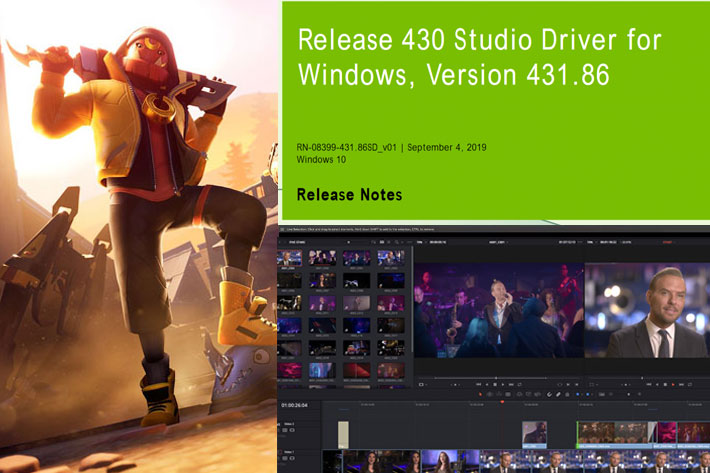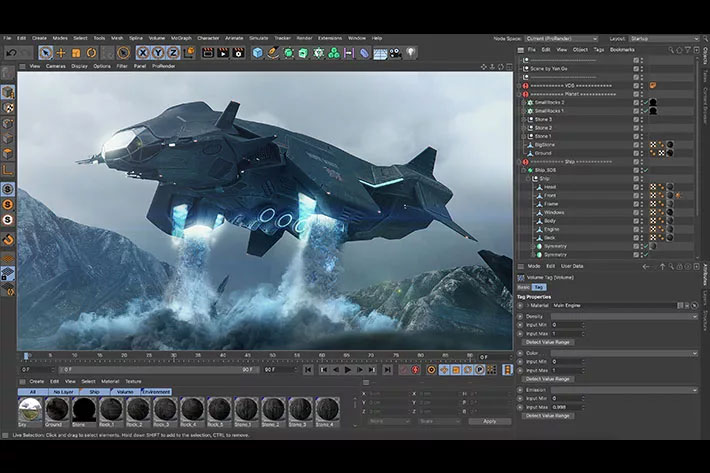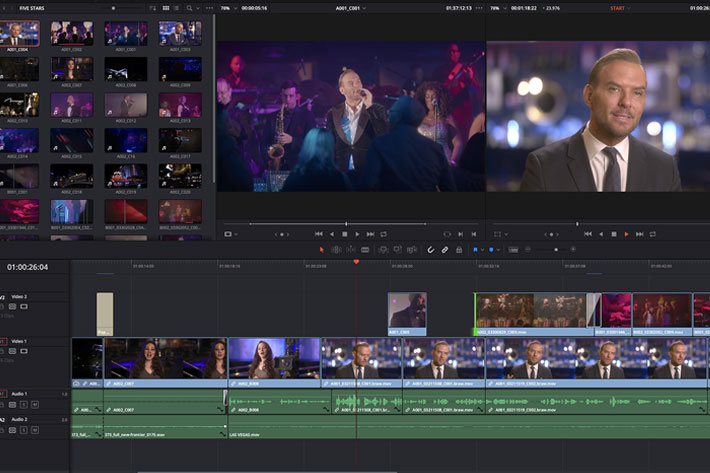
NVIDIA announced the availability of its new Studio Driver, to optimize performance for Cinema 4D R21, Unreal Engine 4.23 and other top creative apps.
NVIDIA Studio Drivers provide artists, creators and 3D developers the best performance and reliability when working with creative applications. To achieve the highest level of reliability, Studio Drivers undergo extensive testing against multi-app creator workflows and multiple revisions of the top creative applications from Adobe to Autodesk and beyond.
As part of the NVIDIA Notebook Driver Program, this is a reference driver that can be installed on supported NVIDIA notebook GPUs. However, users should be aware that notebook’s original equipment manufacturer (OEM) provides certified drivers for each specific notebook on their website. NVIDIA recommends that those interested in trying the Studio Driver check with their notebook OEM about recommended software updates for that specific notebook, as OEMs may not provide technical support for issues that arise from the use of this driver.

Cinema 4D R21 and Redshift
The Studio Driver is compatible with GeForce RTX 20 Series (Notebooks) using the GeForce RTX 2080, GeForce RTX 2070, GeForce RTX 2060, GeForce GTX 16 Series (Notebooks) using the GeForce GTX 1660 Ti, GeForce GTX 1650 and GeForce 10 Series (Notebooks) using the GeForce GTX 1080, GeForce GTX 1070, GeForce GTX 1060, GeForce GTX 1050 Ti and GeForce GTX 1050 graphics cards. Consult the download page and the release notes for more information.
The Studio driver now released optimizes performance for Cinema 4D R21 and other top creative apps. It also offers improved support for recent updates to Adobe Lightroom Classic 8.4, Adobe Substance Designer 2019.2, the full release of Blackmagic Design’s DaVinci Resolve Studio 16.0, and the just released Epic Games’ Unreal Engine 4.23.
Released this week, as ProVideo Coalition mentioned earlier, Cinema 4D R21 brings new capabilities besides workflow and core improvements. The app also supports a new materials system, which simplifies selection of materials available within any supported 3D renderer, such as Redshift. Redshift is a GPU-accelerated renderer that uses NVIDIA CUDA and OptiX for denoising and in a future release, will add OptiX support for RTX ray tracing.

DaVinci Resolve 16 and Unreal 4.23
The latest Unreal Engine 4.23 update also expands its set of features, with RTX users getting ray tracing improvements, while Blackmagic Design DaVinci Resolve Studio 16 makes use of several NVIDIA AI libraries, and the Tensor Cores found on the latest NVIDIA RTX GPUs, to accelerate inferencing. RTX-powered AI features include:
- Speed Warp, which interpolates frames when changing the playback speed of videos resulting in smooth slow-motion with fewer artifacts
- Super Scale, to increase footage resolution by up to 4x
- Auto color and shot matching to accelerate the color grading workflow
- Facial recognition for automatic tagging of clips for smart bins and tracking of facial features easy feature refinement
- Stylize for creating artistic looks on video footage
“DaVinci Resolve 16 Studio uses the latest multiple GPU innovations for AI and deep learning,” said Dan May, Blackmagic Design’s USA president. “With the new DaVinci Neural Engine using NVIDIA CUDA 10 and TensorFlow acceleration, our tests show a better than 2x performance increase over previous NVIDIA GPUs. These same GPUs are also used for decoding and debayering Blackmagic RAW images which makes them an attractive investment.”
Adobe Substance Designer and Adobe Lightroom Classic also use the power of NVIDIAs RTX GPUs to speed up workflows.

